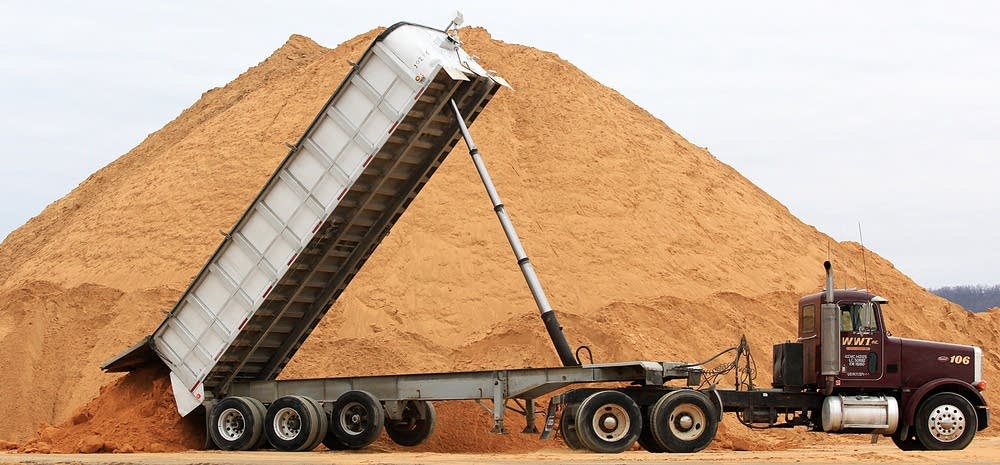
A divided Minnesota Court of Appeals has upheld Winona County’s ban on frac sand mining.
The 2016 ban is Minnesota’s first countywide frac sand mining ban. Winona County has some of the largest deposits of silica sand, which is used in the controversial technique to force oil out of the ground.
Minnesota Sands, a mining company, had leased several Winona County properties in 2011 and 2012, which led to the county ban following a moratorium on mining to study the issue. The company challenged the ban with a lawsuit, saying it violates the constitutional right to interstate commerce.
It doesn’t, a majority of the three-member Court of Appeals said.
“It does not favor in-state interests over out-of-state interests. On the contrary, it even-handedly bans all industrial mineral mining, which includes silica-sand mining, within the county,” Judge Renee Worke wrote on behalf of the majority, which included Judge Lucinda Jesson (See decision) .
The ordinance amendment defines silica sand as that which “is commercially valuable for use in the hydraulic fracturing of shale to obtain oil and natural gas.”
Minnesota Sands argues that this amounts to facial discrimination against interstate commerce because Minnesota has no oil or natural gas reserves, and any silica sand processed into frac sand would be transported interstate and used elsewhere. But the ordinance does not discriminate against interstate commerce on its face by merely stating that silica sand is commercially valuable for use in fracking. Nor does it mean that silica sand has no other commercial uses; it simply describes one commercially valuable use.
This reasoning is consistent with the affidavit of a registered professional geologist retained by Minnesota Sands as an expert, certifying that silica sand may be used for fracking operations, as well as in the manufacture of glass, filter media, and as a construction material or animal bedding.
We do note, however, that the expert’s comment about the use of silica sand as a construction material does not alter our conclusion that the ordinance does not discriminate against interstate commerce on its face. The use of silica sand as a construction material in other counties has no bearing on the plain language of the ordinance itself, which specifies that silica sand is an industrial mineral and bans all industrial-mineral mining regardless of its end use.
In a dissent, however, Judge Matthew Johnson said Winona County’s ban discriminates against the mining industry because it “allows the mining of silica sand for some uses, which are common in the Winona County area, but prohibits the mining of silica sand for other uses, which occur solely outside the state of Minnesota.”
The record also reveals that hydraulic fracturing is utilized in other states (such as North Dakota and Texas) but is not utilized in Minnesota and cannot be utilized in Minnesota because Minnesota does not have any significant reserves of oil or natural gas. The ordinance effectively allows silica sand to be mined and sold to local consumers but does not allow it to be mined and sold to consumers in other states. Thus, the ordinance suppresses interstate commerce, to the detriment of (among others) consumers of silica sand in other states, but the ordinance preserves local commerce, to the benefit of local consumers of silica sand, who are insulated from the effects of unrestricted trade in silica sand. For these reasons, the ordinance is discriminatory on its face because it favors “local” commerce over interstate commerce.
An estimated 100 tons of silica sand are needed each year to support oil drilling.
Minnesota Sands has mining leases to 1,946 acres of land in Winona County that contain silica sand worth between $3.6 and $5.8 billion, according to the La Crosse Tribune.
